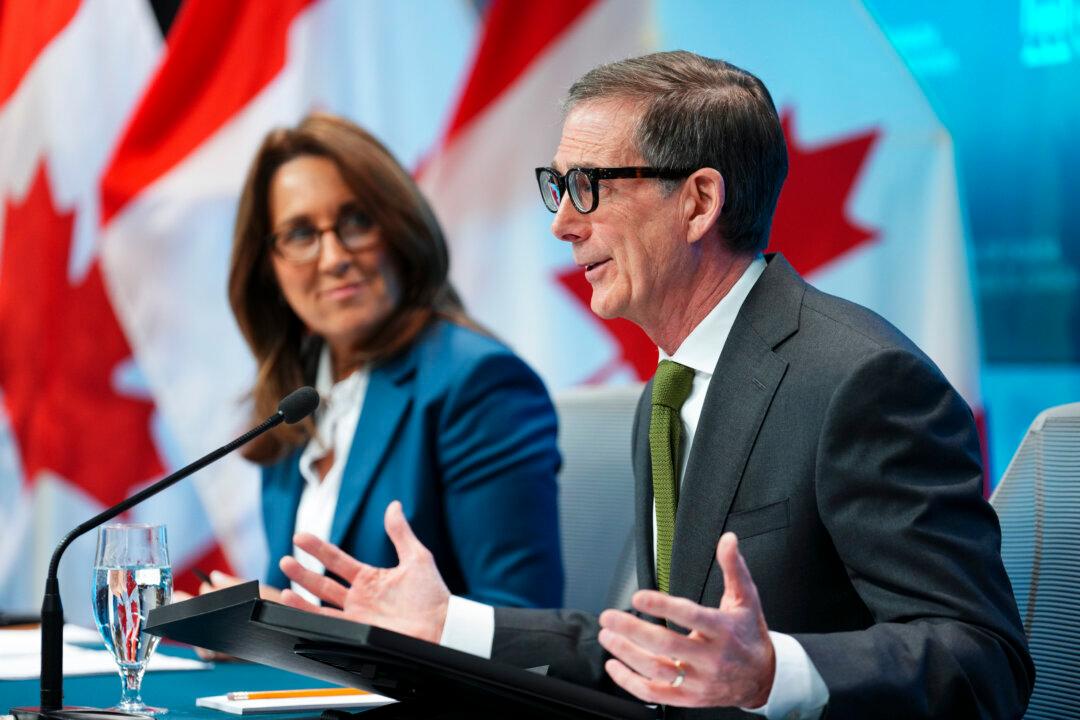Ottawa says it wants the Bank of Canada to keep doing what it’s been doing—with its primary goal being to maintain low and stable inflation over time, fostering a predictable economic environment. However, the renewal of the central bank’s mandate, stating that policy decisions will now also emphasize “maximum sustainable employment” while noting that this is “not directly measurable,” has brought out skeptics.
“I’m not a great fan of what they put out yesterday. I think the mandate that they had before was very explicit, very clear, well-understood,” Jean-Paul Lam, an economics professor at the University of Waterloo and a former Bank of Canada assistant chief economist, told The Epoch Times.
The feds renewed the BoC’s inflation-targeting mandate for another five years on Dec. 13. The central bank is to target total annual consumer price index (CPI) inflation at the 2 percent midpoint of the 1 to 3 percent target range over the medium term.
Known as “flexible inflation-targeting,” this mandate was adopted in 1991. Since the late 1990s and until 2021, “it has delivered low, stable, and predictable inflation,” said BoC Governor Tiff Macklem at a Dec. 13 joint press conference with Deputy Prime Minister and Finance Minister Chrystia Freeland.
The 2021 renewal effectively formalized a framework for the BoC to be even more flexible in fulfilling its mandate. With the renewal, the central bank technically won’t be able to do anything it hasn’t already been doing. However, it can, for example, justify holding interest rates lower for longer to achieve what’s called maximum sustainable employment (MSE), a theoretical concept.
“The Government and the bank also agree that monetary policy should continue to support maximum sustainable employment, recognizing that maximum sustainable employment is not directly measurable and is determined largely by non-monetary factors that can change through time,” according to the joint statement from the BoC and federal government.
MSE represents “the highest level of employment we can expect to achieve without seeing inflationary pressures,” Macklem said. The central bank will not set a fixed target for MSE because it’s “not directly observable” and “the precise level is unknown and evolves over time,” according to a BoC research document accompanying the renewal announcement.
“This is not a change to the framework. Rather it is a recognition of existing practice,” Freeland said.
Freeland added that the renewal agreement was about continuity and that it’s not a dual mandate of targeting both low and stable inflation and maximum employment.
Macklem added that it’s about clarity.
“With respect to this idea of actively seeking or probing for maximum sustainable employment, … that’s something to do when inflation is close to target [and] interest rates are at more normal levels. That’s not the situation we’re in right now,” he said.
The renewal of the inflation-targeting mandate comes at a time when the Canadian economy is dealing with the highest inflation in nearly 20 years. November’s annual inflation matched the 4.7 percent from October. Inflation has been above the bank’s 3 percent upper limit for eight straight months.
“I’m not so sure what the new mandate is bringing in terms of efficiency of monetary policy, because it makes the communication much harder going forward. And as we know, communication is key when it comes to managing inflation expectations,” Lam said.
Despite inflation running hot, medium- and longer-term inflation expectations currently remain stable, Macklem said.
The Bank of Canada already considers a wide range of economic variables in setting interest rates, but making official the new labour consideration is being seen as a sign that higher inflation could be tolerated for longer if the central bank is not satisfied with improvement in employment.
“They [Freeland and Macklem] really couldn’t address the most direct question of all, which is does this mean, you, the government, are going to accept somewhat elevated inflation, in favour of employment?” Carleton University business professor Ian Lee said in an interview with CTV.
“I think that the core issue and that they never came to terms with is, if it’s working, why change it?”





